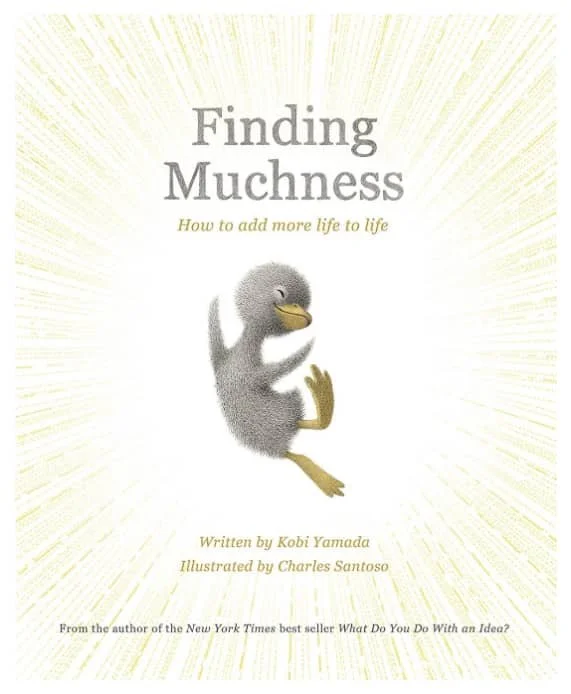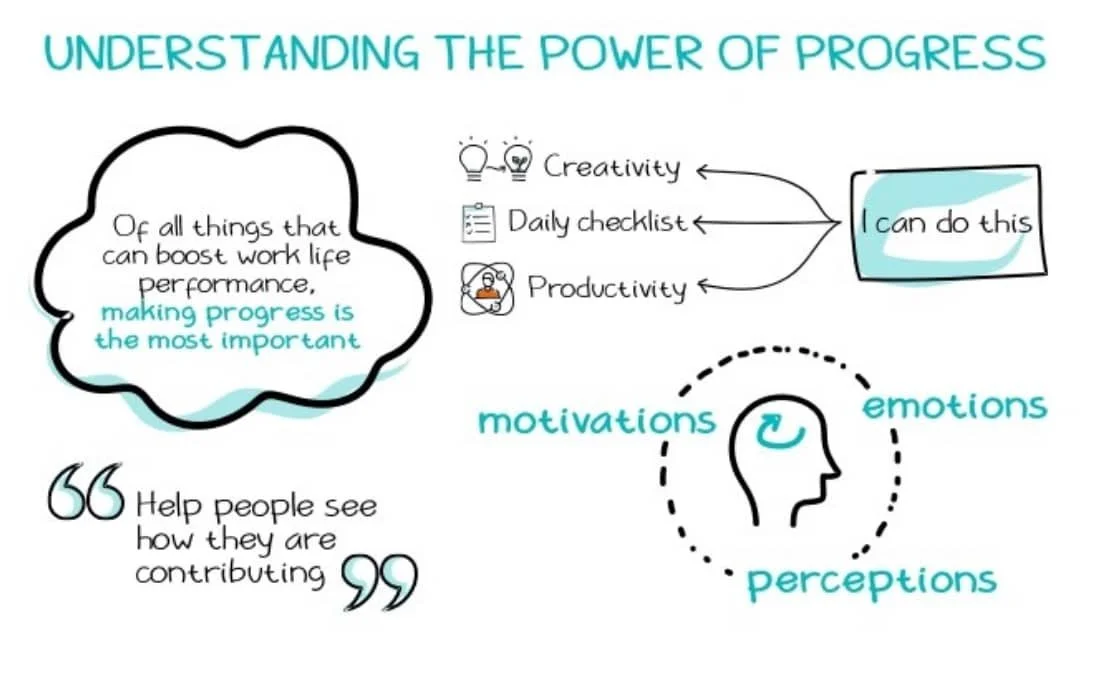The Surprising Trait People Want Most in a Leader
If you were asked to think of the leader who had the most positive influence in your life, and then asked to name the top three words that come to mind when you think of them, what would you say?
Gallup asked this very question to over 70,000 people around the world. And one word stood out clearly above the rest: Hope.
You might have guessed Trust, a concept often connected to psychological safety, strong culture, and high-performing teams. But in Gallup’s study, Hope was mentioned by 56% of respondents. Trust came in much lower at just 33%.
Offering a sense of hope matters, potentially more than we often realize. So what does this mean for us as leaders? It means it's our responsibility to cultivate hope and in this newsletter we will be sharing some ways you can do just that.
Finding Hope at Work
In the children’s book Finding Muchness, author Kobi Yamada defines muchness as:
“The full-hearted abundance of hope and joy and imagination that each of us have when we come into this world. It’s there for us to love, to dare, to dream, to create, and to live our best life. But over time, as we take on more responsibilities and worries, our doubts and fears have a way of growing with us. And because of this, we lose much of our muchness.”
The truth is, this same dynamic often plays out in the workplace. We start new jobs or roles with an abundance of drive, hope, and excitement only to find that over time, the pressures, complexities, and disappointments of work chip away at that initial spark. The “muchness” that made us eager, creative, and optimistic can fade.
Most of us can remember a season in our careers when we felt fully alive at work, motivated, engaged, and hopeful. But those moments often feel fleeting, rather than the norm. If we want to build healthier organizations, we need to design environments where muchness isn’t something we lose, but something we actively sustain.
That’s why hope matters so much. Because hope is the pathway to keeping muchness alive.
What Is Hope, Really?
Psychologist Dr. Chan Hellman, founder of Hope Centered and one of the leading researchers in the field, offers a powerful and practical definition. He defines hope not as a vague emotion, but as a measurable, learnable way of thinking:
Hope = Goals + Pathways + Agency
This formula shows us that hope is not passive. It is active, intentional, and dynamic. It is something we can strengthen through the way we lead, design systems, and support our teams.
Let’s break it down:
Goals
Hope begins with something to strive toward. Not just any goal, but one that feels personally meaningful and emotionally resonant. When people can picture a better future and believe it is worth working toward, hope starts to take shape. In teams, this means setting goals that are clear, motivating, and connected to a larger purpose. It is not just about hitting a number. It is about making progress toward something that matters.
Pathways
It is not enough to know what you want. You also need to see a way to get there. And when one path is blocked, you need to believe that another one can be found. Hopeful people do not just have one plan. They stay flexible, think creatively, and look for support. When obstacles appear, they do not stop moving. In teams, leaders can support pathways thinking by encouraging collaboration, removing barriers, and reinforcing the idea that there is always more than one way forward.
Agency (Willpower)
This is the power source of hope. Agency is the belief that you can take action and that your actions will make a difference. It brings energy, determination, and ownership, especially when things are hard. Unlike optimism, which often rests on belief without action, hope includes a sense of personal capacity. It is not just the belief that good things might happen. It is the belief that you can help make them happen. In teams, agency is built through systems that give people voice, choice, and clarity. When people feel empowered to act, hope becomes more than a moment. It becomes part of the culture.
So, How Do We Build Hope on Our Teams?
At the heart of work are people and systems. People bring effort, emotion, and energy. Systems shape the conditions in which that effort takes root. If hope is going to thrive in our organizations, it must be intentionally supported by both.
The good news is, it can be cultivated. It can be strengthened. And it starts with the everyday choices leaders make - the way we communicate, set goals, build rhythms, and invite connection.
Here are five ways to build and sustain hope, together with your team.
1. Create a genuine sense of meaning
Clarify and communicate your organization’s Identity - its beliefs, mission, and purpose. When people can connect their day-to-day work to something larger, they feel more engaged, more energized, and more committed. As we write in At the Heart of Work, helping people find meaning in their work is more valuable than just about any benefit you can provide. When work feels purposeful, people become more focused, more resilient, and more willing to navigate challenges together.
Key idea: When people know their work matters, hope increases.
2. Set meaningful goals together
Hope begins with a clear and compelling vision of the future - that tomorrow will be better than today. But for that vision to truly matter, people need to feel like it’s theirs, not just something handed down to them to execute. That’s why the process of setting goals matters just as much as the goals themselves.
Invite your team into the process of naming what matters most. Co-create goals that are specific, motivating, and aligned with your shared purpose. When people see their fingerprints on the future, they don’t just commit to the work, they feel personally connected to it
This type of shared ownership creates momentum. It builds a sense of agency and possibility. And it signals something essential: We’re building this together. And here’s the multiplier effect, when teams begin to make real progress on goals they helped define, they don’t just feel successful. They feel hopeful. They begin to believe in what else they can accomplish together. That belief is contagious.
Key idea: When teams make progress toward goals they created and committed to together, they become more hopeful about what’s possible next.
3. Track progress and celebrate small wins
Hope builds with momentum. When people can see and feel that progress is happening, even in small ways, they are more likely to stay engaged.
This is at the heart of what researchers call the Progress Principle: the single most powerful driver of positive emotions and motivation at work is making meaningful progress in meaningful work. It’s not about giant leaps. It’s about steady steps forward.
Leaders can help their teams build hope by creating simple, consistent ways to track progress and celebrate it. Use visual tools, shared dashboards, or simple check-ins to make movement visible. Celebrate effort, not just outcomes. Build rhythms that mark progress, even when the path is long. When people experience consistent signs that forward motion is happening, they begin to internalize a powerful message: We’re not stuck. We’re moving.
Key idea: Progress is one of the most powerful sources of fuel for hope. Even the smallest win can renew energy and belief.
4. Prioritize connection
Hope is not just an individual mindset. It is something that grows in community. When people feel connected to each other and to something larger than themselves, they are more likely to believe that progress is possible. That’s why connection is not a side benefit, it’s a strategic priority.
Strong relationships, built on trust and psychological safety, create the foundation for hopeful teams. Leaders can foster this by creating space for real connection. Build in moments of human check-in, not just status updates. Establish rituals that bring people together. Normalize vulnerability and invite shared reflection. Design systems that help people feel supported, seen, and part of something meaningful.
Key Idea: When people feel connected, they are more likely to believe in the path forward, and more willing to walk it together.
5. Be honest about challenges and open about solutions
Hope is not about pretending everything is fine. It is about facing reality with courage and choosing to move forward anyway. In times of uncertainty, people don’t need polished optimism. They need the kind of hope that comes from knowing their leaders are telling the truth, involving them in the path forward, and believing they can rise to the challenge together.
When leaders name hard things with honesty and invite others into shared problem-solving, they are doing more than communicating. They are building trust. And trust, over time, becomes the foundation for lasting hope.
Key idea: People don't need certainty. They need clarity, and a sense that their effort matters.
The Final Word: We need hope more than ever
We’re living in a time when people are craving something deeper. The pace of change is relentless. The world feels uncertain. And for many, work has become a place of pressure instead of purpose. What people are looking for, maybe more than ever, is hope.
Not shallow positivity and not forced enthusiasm, but real hope. The kind that communicates, "You belong here. Your work matters. And we are building something meaningful, together."
The encouraging news is this: Hope is not just a feeling that comes and goes. It is something we can create. It is something we can design.
When we build systems that give people clear goals, real pathways forward, and norms that give people a sense of agency, we are creating the conditions for hope. When we create routines that make progress visible and celebrate even small wins, we are investing in hope. When we design our organizations in ways that center belonging, clarity, and purpose, we are building a culture where hope can thrive.
And when we do all of this together, not just for our teams but with them, we are doing something powerful. We are not only building stronger, healthier organizations. We are becoming the kind of leaders the world needs most right now.
Because hope is more than a strategy. It is a gift. And in times like these, the world needs more leaders who are willing to offer it.
- Shaun & Joe


